|
|
|
|
The Portable Library of Hong Samud
The Portable Library of Hong Samud
a novel that grew as a vine grows,
guided by an innate, phototactic sensitivity
transcribed by David J. Keffer
|
|
|
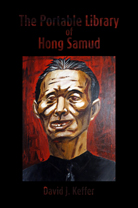 A synopsis:
A synopsis:
The Portable Library of Hong Samud is the same story told simultaneously from three perspectives, which are seamlessly intermingled through-out the narrative. One version of the story tells the tale of a librarian, Hong Samud, who retreats from the unpalatable terms of this physic-based reality, to construct a paradise in the form of a perfect and infinite library within a purely mental realm. He performs all roles in this library--maintenance, acquisitions and patron services. This library is modeled on the Akashic Archive of eastern philosophies, a timeless and extra-dimensional repository of knowledge. After a thousand years tending his library, Hong Samud ventures forth to put the virtues of his library to practical effect.
A second account of the same story is provided by an insurance clerk, M. Anxo, who first accidentally wanders into Hong Samud's library while searching for information on a distant land, the destination of a precious cargo for which he is tasked the job of assigning an insurance premium. Anxo sees the librarian as an eccentric but knowledgeable man, possibly a vagrant for he seems to have no home but the library, and a man likely in the grips of early onset dementia, based upon the otherwise inexplicable peculiarities of his person. Together these two men become unlikely partners in the investigation of the disappearance of an employee of the insurance company, a prospector of sorts, for whom Anxo harbors an unspoken affection.
A third account, related in fragments dispersed within the other two versions, is provided by the librarian's daughter, who is presented as a person lying somewhere between an independent being and a figment of the father's imagination, who considers her to be part crow.
|
|
|
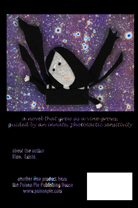 A few notes on the writing:
A few notes on the writing:
The writing of the manuscript of The Portable Library of Hong Samud was begun on August 25, 2015. Having finished The Augur in the Arbor Inn, a manuscript of some 202,000 words, only a month earlier, the author was in no state of mind to begin a new novel length manuscript. Moreover, the day after writing of the The Augur in the Arbor Inn was completed (on July 15, 2015), the author had begun to write the text for the illustrated book, A Bestiary of East Tennessee. The writing of the text of A Bestiary of East Tennessee was completed on August 18, 2015. Precisely one week one passed when the author began writing The Portable Library of Hong Samud. To be sure, there was no time to develop characters or a plot or any traits often thought essential for the writing of a novel. In fact, the author resolved to write as little as possible each day in recognition of the facts that (i) so little time had elapsed since the completion of the previous work and (ii) he began the journey almost empty-headed.
This description of the context in which the writing of The Portable Library of Hong Samud commenced is included for two reasons. First, it provides evidence that the author was under a compulsion to write. Even he knew that such a condensed time line could not allow the necessary incubation of ideas required to generate a creative work. Nevertheless the work was begun without a plot and with only the most vague notion of theme and three possible characters--the librarian, the insurance clerk and the prospector. Because of the notion that the author was compelled to write, we describe above this act as a transcription in which the author actually served in the role of amanuensis. Here, we choose not to speculate on the origin of the dictation.
Second, this time line serves to demonstrate that the manuscript of The Portable Library of Hong Samud was generated through an improvisational process rather than a compositional process. Much has been written by the staff of the Poison Pie Publishing House regarding a literature of non-idiomatic improvisation. For interested parties, the International Journal of Exploratory Meta-Living has reprinted articles discussing the matter at length and in brief. It seems probable that the improvised nature of the manuscript will be readily apparent to the reader. Even the dating of each passage, providing provenance for the improvisational act, is perhaps unnecessary, though it has been included out of a sense of tradition to the idea that the knowing the date and place of a live performance may be useful in better understanding it.
The Poison Pie Publishing House is a champion of post-existential fantasy. The Portable Library of Hong Samud is an example of such a work. Again, The International Journal of Exploratory Meta-Living has published an article discussing post-existential fantasy for interested readers.
At the time of this writing, the manuscript is unfinished, though it remains vibrantly in progress. [Editor's note: Manuscript was completed on December 11, 2015.]
|
|
|
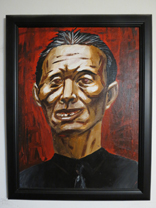 A Portrait of Hong Samud:
A Portrait of Hong Samud:
This portrait of Hong Samud was painted by the artist, Mr. Nobuhito Tanaka, shortly before the turn of the century. Thus, the portrait predates the manuscript by more than a decade, perhaps two. We have been made to understand that the artist does not hold this portrait in particularly high regard, which endears it to us all the more, for who is more in need of attention than an unloved child? For many years it has hung above the fire place in the house of the author.
|
|
|
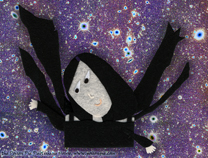 Bird Faeries of East Tennessee:
Bird Faeries of East Tennessee:
The rendering of Hong Samud's fellow librarian, the crow faerie, is the work of Ms. Ruth Marie Keffer. This puppet is one of several bird faeries of East Tennessee currently featured in the experimental laboratory of the Poison Pie Publishing House.
|
|
|
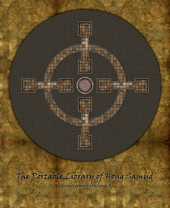 Cartography of the Library:
Cartography of the Library:
Numerous conflicting representations of the library of Hong Samud exist, because each patron to the library experiences it somewhat differently than any other. At the following link, several maps are presented with brief notes on each.
|
|
|
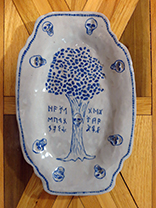 The Curious Reappearance of a Ceramic Plate:
The Curious Reappearance of a Ceramic Plate:
This dish was found in the library of Hong Samud, though the agent and manner by which it was delivered remain unknown. It was sculpted by the guitarist and biologist Chris Gallagher in the Midwest during the penultimate decade of the previous century.
|
|
|
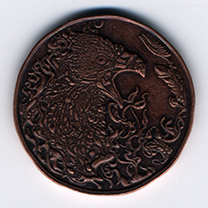 The Bird Coins:
The Bird Coins:
The daughter of the librarian has in her possession a pocketful of coins bearing on one face an image of a bird. Such a coin is represented here. In some places a coin is described as copper and in others silver. Whether the coins were minted in two metals or rather it is the same coin perceived differently under different circumstances has not been conclusively resolved. This coin was designed by the Rare Elements Team and minted by Osbourne Coinage.
|
|
|
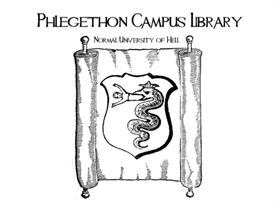 Experimental Laboratory of Symbology
Experimental Laboratory of Symbology
Emblems representing numerous libraries present in The Portable Library of Hong Samud are provided for viewing in the Experimental Laboratory of Symbology at the Poison Pie Publishing House. These designs are the work of Ms. M. Poonawala.
|
|
|
Previous Collaborations:
An employee of the Sigil Insurance Company, the clerk, M. Anxo, and an independent contractor, the prospector, Execrabilia, have worked previously together. The collaboration immediately preceding The Portable Library of Hong Samud is A Bestiary of East Tennessee, an encyclopedia of creatures, mundane and exotic, illustrated in felt and presented through the auspices of the Poison Pie Publishing House. A promotional flyer for that work is shown below.
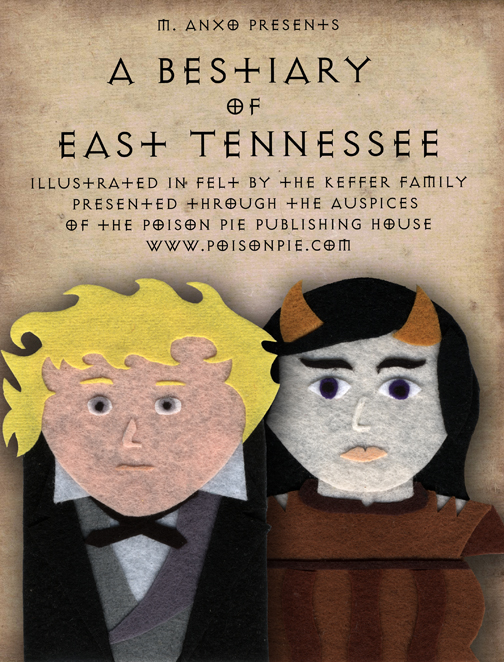
|
|
|
free, anonymous access to full text online: PPPH
length: 80,000 words (202 pages in paperback)
written: August 25, 2015-December 11, 2015, Knoxville, Tennessee
paperback size: 6 in x 9 in
paperback publication date: unpublished
paperback ISBN-13: N.A.
paperback ISBN: N.A.
Library of Congress Control Number: N.A.
ebook publication date: N.A.
ebook ISBN-13: N.A.
poison pie publishing house catalog number: PP-034-N
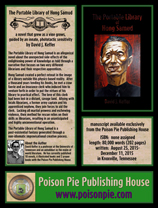 Promotional Flyer
Promotional Flyer
A promotional flyer for The Portable Library of Hong Samud is available. Many such flyers for books from the Poison Pie Publishing House are collected here.
|
|
|

